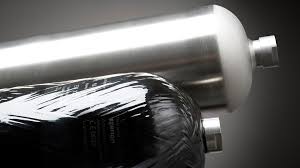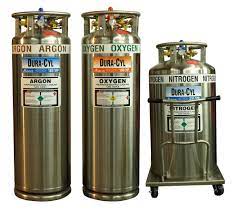
Cylinder Inspection Training: Why a Maintained Cylinder Is a Happy Cylinder
Uncover the importance of gas cylinder inspections and training. Dive deep into ensuring safety, boosting efficiency, and prolonging cylinder life.
During a recent class I was discussing the slide on over-pressurization. We discussed the different environments where the cylinders are exposed, and the temperatures in those environments. We talked about high temperature environments; such as direct exposure to the sun and stored in a trunk. We also talked about cold environments; Ice and frigid weather conditions. When I mentioned that a “RULE OF THUMB” mathematical calculation was approximately 5 PSI difference for every 1 degree of Fahrenheit, I was questioned. The student was not argumentative at all but had a hard time believing that there was such a great temperature variable with such a small movement on the thermometer. I was confident in my answer, but it also made me go back and verify that I was providing the correct information.
I am not a mathematician, by a long shot. However, I do know how to plug numbers into a computer and I hope that the programmer did their calculations correctly. Since I am not good at math I am always trying to verify what I am told and place it into context. I thought I would share the data I learned on the pressure to temperature ratios. Otherwise known, by the smart people, as Guy-Lussac’s Law.
Before I begin, for those of you who have a greater grasp of mathematics, If I am wrong in anything I say PLEASE let me know so it can be corrected. Here is what I learned and I will work it out so any errors can be corrected.
Guy-Lussac’s law also confirms that PRESSURE (what you see on the gauge) changes. However, the volume remains constant. The pressure may go up and down as the temperature changes, but the volume will always be the same within the closed container (reinforcing the point we make in the cylinder inspection program).
Guy-Lussacs law is composed of the following equation: P1/T1 = P2/T2. P= pressure absolute (we need to take away that cumbersome 1 ATA or 14.7 psi). The T = absolute temperature. To ensure an absolute temperature we will us the RANKINE scale.
We also need to remember that we have some other conversions to make: PSI to BAR and BAR to PSI
psi x .069 = bars bars x 14.5 = psi
Our story problem: Mary and Frank get their cylinders filled to 2400 psig (166BAR) at 70 degrees. They then keep them in the trunk of the car for a few hours and the trunk is a constant 104 degrees farenheit. What gauge reading will they get assuming the temperature of the gas within the cylinder also rises to 104 degrees?
T1 = 70 degrees F + 460 = 530 degrees Rankine
T2 = 104 degrees F + 460= 564 degrees Rankine
P1 = 2400 + 14.7 = 2414.7 PSIa
P2 = ???
2414.7 / 530= 4.556
? / 564 = ??? therefore we take 564 X 4.556 = 2569.6. Our final step is to subtract our 1 ata (14.7).
Therefore 2569.6 – 14.7 = 2554.9 PSIG
The pressure rose 155 PSI with a 34 degree pressure change
And to make certain I am not making an incorrect statement that 1 degree Fahrenheit equals 5 psi we will check our equation.
2555 – 2400 = 155 degrees difference. Temperature difference was 34 degrees Fahrenheit.
Even I can handle this simple math 155/34 = 4.55 PSI per degree of Fahrenheit.
REVERSE problem: 3000 PSIg @ 70 degrees. Leaving it in a cold environment of 50 degrees Fahrenheit. What is the gauge reading?
T1 = 70 + 460 = 530 RANKINE
P1 = 3000 + 14.7 = 3014.7
T2 = 50 + 460 = 510 RANKINE
P2 = ???
3014.7/530 = 5.688
P2/510 ……. 5.688X510 = 2900.93
2900.93-14.7 = 2886 PSIg
Therefore taking the original 3000-2886 = 114 pressure variance. 114/20 Temperature variance = 5.7 PSI
Based on the above examples, there is no specific constant of Pressure to Temperature. However, we can safely say that an average ratio is 1 PSI equals 5 degrees Fahrenheit. If you get that stubborn student, who knows more math than you, then simply refer them to Guy-Lussacs law and let them plug away at the numbers while you continue with your class with the confidence that you will be correct in your statement.

I enjoy continuing to build the business based on safety since 1999. CTS focuses on the inspection of high pressure cylinders, the maintaining of the valves and basic maintenance of high pressure compressor systems. CTS stays current in techniques and tools to train both the new and novice employee. We publish articles, update training tools and have created an APP to assist during the inspection process.
#cylinder #safety #hazmat #training #cylinderinspectiontraining #cylindex

Uncover the importance of gas cylinder inspections and training. Dive deep into ensuring safety, boosting efficiency, and prolonging cylinder life.

Is your composite cylinder showing signs of wear? Discover when to seek a professional repair service in our comprehensive guide.

29 CFR 1910.101 intro Handling cryogenic cylinders involves working with extremely low-temperature gases that pose unique safety risks. To ensure the safe handling, storage, and transportation of these hazardous materials,

Introduction Firefighters encounter many risks while on duty, including hazardous materials and high pressure bottles. High pressure bottles are used for a variety of purposes in firefighting, including powering hydraulic